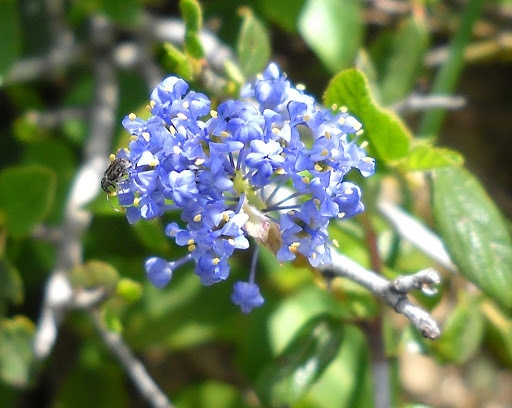Lemmon’s Ceanothus
(Ceanothus lemmonii)
Lemmon’s Ceanothus (Ceanothus lemmonii)
/
/

© 100460587416170889624
CC BY 4.0
Image By:
© 100460587416170889624
Recorded By:
Copyright:
CC BY 4.0
Copyright Notice:
Photo by: © 100460587416170889624 | License Type: CC BY 4.0 | License URL: http://creativecommons.org/licenses/by/4.0/ | Uploader: marek | Publisher: iNaturalist |

























Estimated Native Range
Summary
Ceanothus lemmonii, commonly known as Lemmon’s Ceanothus, is an evergreen shrub native to the chaparral and mixed evergreen forests of the Inner North Coast Ranges and the Sierra Nevada foothills, primarily west and east of the Sacramento Valley in California. It typically grows to a height of 3 feet and can spread slightly wider, with a dense, mounding form. The shrub features gray woody stems and green, hairy young twigs. Its leaves are small, oval, dull green, and densely hairy beneath, which helps reduce water loss in its dry native habitat. From late winter to early spring, it produces showy clusters of pale to bright blue or purple flowers, which are highly attractive to pollinators. The fruit is a small, smooth capsule that may persist on the plant.
Lemmon’s Ceanothus is valued for its drought tolerance and ability to thrive in poor soils, making it an excellent choice for water-wise gardens and restoration projects. It is often used for slope stabilization, as a ground cover, or in naturalistic plantings. In cultivation, it requires minimal water once established, well-drained soils, and full sun to part shade. While it is generally low-maintenance, it can be susceptible to root rot if overwatered or planted in poorly drained soils. This species is not known for aggressive roots or significant disease problems, but it can be short-lived if not sited correctly. It is also important to avoid heavy pruning, as this can reduce its vigor and flowering potential.CC BY-SA 4.0
Lemmon’s Ceanothus is valued for its drought tolerance and ability to thrive in poor soils, making it an excellent choice for water-wise gardens and restoration projects. It is often used for slope stabilization, as a ground cover, or in naturalistic plantings. In cultivation, it requires minimal water once established, well-drained soils, and full sun to part shade. While it is generally low-maintenance, it can be susceptible to root rot if overwatered or planted in poorly drained soils. This species is not known for aggressive roots or significant disease problems, but it can be short-lived if not sited correctly. It is also important to avoid heavy pruning, as this can reduce its vigor and flowering potential.CC BY-SA 4.0
Plant Description
- Plant Type: Shrub
- Height: 1-3 feet
- Width: 3-6 feet
- Growth Rate: Moderate
- Flower Color: Blue, Purple
- Flowering Season: Spring
- Leaf Retention: Evergreen
Growth Requirements
- Sun: Full Sun, Part Shade
- Water: Low, Medium
- Drainage: Fast, Medium
Common Uses
Bird Garden, Butterfly Garden, Deer Resistant, Drought Tolerant, Erosion Control, Low Maintenance, Showy Flowers
Natural Habitat
Native to chaparral and mixed evergreen forests
Other Names
Common Names: Wild Lilac, Buckbrush
Scientific Names: , Ceanothus lemmonii,
GBIF Accepted Name: